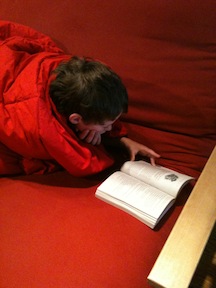If you read any industry trade newsletters yesterday, you’ve heard all about the devastation in Vermont. As a Vermonter, I can tell you it’s one thing to read about it, it’s another to see it.
While the Flying Pig suffered no damage at all, our friends down in southern Vermont got absolutely pounded. My local news has done little but show the near total ruin of several towns, all of which have bookstores in them. These people are my colleagues and after seeing the photos I cannot imagine what they’re going through.
Downtown Brandon, home of Briggs Carriage Bookstore, is awash. Main Street has become a rushing river. The water was so bad, a pizza restaurant was moved 20 feet off its foundation. The building actually moved! I cannot believe the power of the water. Calls to the store were not answered (they’re closed on Mondays) so I don’t know how they’ve fared. Access to the town has been rerouted because part of the main road has washed away, so I can’t imagine there’s much business to be had even if they’ve escaped the flooding.
Lisa Sullivan, the owner of The Book Cellar in Brattleboro, which was destroyed in a fire this past April, suffered another huge loss as her second store, Bartleby’s Books in Wilmington, which was located literally in the eye of the flooding, has been all but totally destroyed. According to her Facebook page, if the National Guard lets her staff in, she’s going to try to salvage the books on the top shelves. This is beyond my comprehension. To lose two stores to catastrophes in less than five months would be more than I could bear. I looked around my store today and thought how I would feel if it were all ruined. The shock, the anger and the sheer enormity of rebuilding would have me paralyzed.
Lisa vows to rebuild as soon as possible. I admire her spirit and wish her only clear skies and nothing but the best fourth quarter a bookstore ever had.
Monthly Archives: August 2011
Murphy’s Law
Josie Leavitt - August 29, 2011
It does seem to work out that the minute a crazy day starts to slow down significantly, I am often alone in the store, and then it gets really, really busy. Friday was such a day.
My day started with a quick breakfast meeting with my Chronicle rep who was racing to get back home for a memorial service. The speed of the meeting set the tone for the rest of the day. Customers filled the store in the morning, all in some sort of hurry. Books were slapped down on the counter by one over-caffeinated person after another. “Goofy. It’s just a goofy day.” That’s how JP, our stalwart morning staffer. explained the tenor of the day.
Things slowed down considerably after 1 p.m. We received distributor orders, shelved, called special orders and generally got a ton done in the lull of the day. JP had offered to stay if things got busy, but I sent her home the end of her shift at 2 p.m. Things were quiet for an hour or so, and thought the best of the day was behind us. I was secretly grateful because vacation schedules left us shorthanded and I was alone, confident I could handle the day.
Boy was I wrong. Something happened at 3:30. One person came in, then another and another and another and still more. There was a moment when I just started chuckling to myself as I looked around at all the people. I was literally sprinting to get the phone. I triaged the customers: who needed immediate help, who just needed to know what section to browse in, who needed to get rung up, who needed something wrapped? Why is it whenever I’m alone and the store is busy, everyone, and I mean everyone, wants not just one book, but all their books wrapped? A mom even had me wrap three games she bought as Christmas presents! One kindly customer actually came around the counter and wrapped her own books because the line at the register was too long.
Often during these rushes someone calls who just doesn’t want to get off the phone, even after the info has been shared, the book ordered, etc. I find myself wanting to shoot myself during these moments, as I find my head pulsing with the number of people needing my attention. Eventually, I can extricate myself from the call and get back to the live bodies in the store.
Staffers will often say, “Call me if you get slammed.” I never call because invariably by the time they come back to work, the need for them has abated. I’ve only called once and that was when 30 people descended on the store at once. And of course, by the time the generous staffer showed, the people had all but gone.
This pace continued right up to closing. I was as exhilarated as I was exhausted. I drove home smiling.
Is the Personal Library Doomed?
Elizabeth Bluemle - August 26, 2011
My nephews are both avid readers, a happy coincidence that brings their book aunties much joy. Their house in Burlington is rich in bookcases. They spend summers at the lake, where more bookcases sport ragged, well-loved mysteries and fantasies, Mythbusters and Star Wars books, copies of comics collections like The Order of the Stick, Calvin and Hobbes, all of the Harry Potters. You know, summer staples. When their friends come over, books are readily shared and shown off, shelves pored over, volumes handed between kids like candy bars. Recently, I was lounging on the dock near my nephew Jake and his friend Riley, who were both reading ARCs I’d brought (Super Diaper Baby 2 and Squish). Utterly lost in the companionable habit of reading, they finished their books at exactly the same time and, without a word between them, exchanged books and started reading once again. It was a classic moment and one that made me think, yet again, about the way the reading experience changes with Kindles and Nooks and iPads.
Children, both experienced bookavores and those just learning to read, are SO PROUD of their libraries. “Want to see my books?” they exclaim, leading you by the hand over to the shelves to marvel, especially proud of the sheer number of volumes they have read. There’s something about the physical mounting up of books, the scale of stacks, that cannot be replicated with a gadget. And the thickness of books! Everyone who knows kids knows how Extremely Important a book’s length is, how proud kids are of having waded successfully through all the pages of Inkheart or Harry Potter V. Waving around a Kindle saying, “Look at all the books I’ve … downloaded!” just doesn’t have the same impact as twelve feet of worn spines and pages softened by lingering fingers.
The same is true for adults. When new romances are blooming, bookavores spend a lot of time surreptitiously checking out their dates’ bookcases (and, let’s face it, assessing at least their literary compatibility). At dinner parties among new acquaintances, conversations are often sparked by titles—intriguing or familiar—spotted on nearby shelves. It’s the best kind of snooping, poking around other people’s libraries. Our book choices are intimate, revealing, our discoveries meaningful and serendipitous.
Looking over someone’s Kindle contents tells me something, but not much. Was this title even read? Has it been re-read, loved, slept with? Read in the bath and therefore slightly waterlogged? Where are the dog-eared pages, the satisfying kinesthetic memory inherent in heft, shape, size? And don’t forget about bookmarks: those tell their own stories. In my own books, I re-discover bookmarks from long-defunct bookshops I loved, receipts and restaurant napkins I used to mark my place that now serve as travel diary entries, photos and other random flat paper items I grabbed to use as placeholders and then left there, giving me sudden bright glimpses of my own forgotten past. And there are items in the pages of books that were left there by other readers, little messages in bottles from across mysterious seas. My sister gave me a beautiful old King James Bible, an ornate leather-bound version from the 1800s, with illustration plates protected by onion skin. Pressed into the heart of the book, between onion skin and paper, was a four-leaf clover. I love this so much I can hardly stand it. A person of faith, perhaps, who owned this book before me, hedged his or her bets with a little piece of pagan luck! Show me an e-reader that can provide that kind of wacky archaeology.
The convenience of e-readers is handy, but libraries are treasure troves. I have so many friends and acquaintances who have shifted the bulk of their book buying to e-readers that I am starting to think about more than the usual anxiety about the future of publishing and bookselling. Book fanatics will always be here, and our libraries will survive. But I am starting to wonder whether the casual personal library is in danger.
This idea of the empty library haunted me enough that I asked phenom New Yorker cartoonist and children’s book illustrator (and Vermont neighbor) Harry Bliss if he’d like to draw it up. This is what I sent him:
“A guy leading a tour of his home to guests in a room full of emptied built-in bookshelves. On the tabletop of one of the bookcases is a stand with a Kindle on it. Guy is gesturing proudly toward Kindle. Caption: And THIS is my library.
Sad. True. Sob.”
Here’s what he sent back (with a note saying, “The Kindle or ipad, I thought was too difficult to read, so I made it a laptop….“)
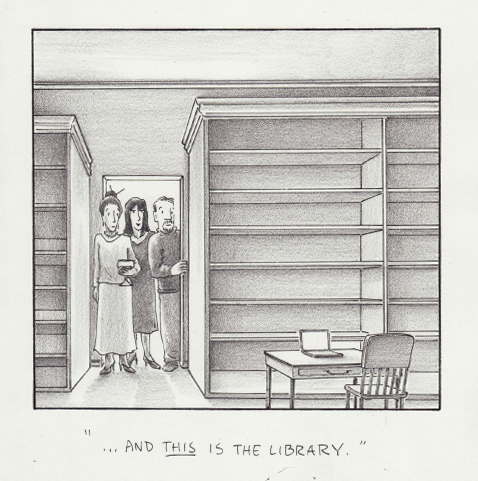
And that vision, people, is my nightmare.
By the way, how amazingly, unutterably COOL is it to have talented artist pals who can actually take an idea and DRAW it up?! For those of us without the art gene, pretty darned cool. And, um, Harry BLISS. Whee! (Public service announcement: If you don’t already subscribe to his daily cartoons, which are hilarious, you can do so on his website.)
So, what do you think? Is the casual personal library doomed? And what impact will that have on kids, not to mention our ability to judge potential mates? Inquiring minds (don’t) want to know….
Extending Summer One Customer at a Time
Josie Leavitt - August 25, 2011
I love the last weeks of summer. I can feel a tiny chill in the air that means fall is around the corner. What makes these weeks fun are the different types of customers whose shopping habits have become a wonderful summer tradition.
The first customer is the utterly frantic student who has somehow managed to not do their assigned summer reading. These kids kill me. I see them come in and their eyes dart from shelf to shelf scanning for the shortest possible book that will fulfill the criteria of their school. I keep a lot of Jack London and Jules Verne on hand for these emergencies. I try not to laugh as they act like I’m psychic when they walk in and I just hand them a short classic. It’s an amusing rite of summer that I enjoy, just like back-to-school commercials made me laugh rather than fill me with dread as they used to. It is a rare kid who comes in this week who has actually finished all their summer reading or the essay that needs to get done too.
My nephew is starting seventh grade at a private school next week and he still has his essay to go. His school assigns a reading response essay to be written in the style of the author of the book. I think this is a great assignment. I asked Will what he was doing and he told me he got great advice from a fellow student who told him: pick somebody old who uses big words and long sentences. I thought that was fabulous.
The second customer is the teacher doing last-minute shopping for his or her classroom. This time of year teachers are happy, and harried, as they prepare for the arrival of their students. This year we had a first-year teacher who was told to create a great library for her sixth grade language arts class room, with a range of reading levels from second grade to ninth grade. Her enthusiasm was contagious. Every book I recommended was met with a broad smile and vigorous nodding and saying, ” Yup, great.” We organized the stacks into every genre. It was exhilarating to get books in that classroom that were midlist gems, great multicultural stories, and contemporary treasures that I thought the kids would love. I will sa:y every teacher who has been shopping this week has been really excited about books, more so than in years past. I’m not sure why, but it’s been really fun.
The last group are the tourists whose school year starts later than Vermont’s. They seem to buy books in bulk. They are on the last weeks of their summer vacation and they are going to read. This group lets us feel the love. Sadly, a lot of these folks don’t have good indies where they live, so they soak in our store. They ask our names, they shake our hands when they leave.
What’s great about all these groups is they value our store. While the students might not be waxing rhapsodic about us, they appreciate us for saving their bacon. I treasure the teachers and the tourists these two weeks because they’re fun and rewarding, and they extend my summer, too.
What’s Everyone Reading?
Elizabeth Bluemle - August 24, 2011
I’m in the middle of a few especially good books here, and I know when I finish them, I will be bereft, hoping that my next read will come close to matching their deep rich goodness. Therefore, I look to you, Dear Readers, to share your current best reads (preferably published recently, or upcoming). What are the can’t-miss discoveries of your summer?
Mine:
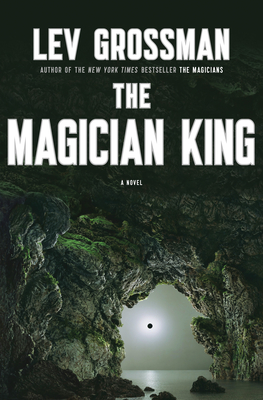 The Magician King, by Lev Grossman. This is a sequel to Grossman’s 2009 novel, The Magicians, which actually lived up to the hype surrounding its publication, even the hype deeming it “Harry Potter for grownups.” The Magicians follows high-school senior Quentin, who gets invited to test for a magic academy, passes, and discovers not only that magic is real, powerful, unbelievably complicated and tedious, but also that the Narnia-like world he’d always loved in novels as a kid is not only real, but in deep trouble. Wine, sex, melancholy, disillusionment, and an adult sensibility are a few of the non-Harry Potter aspects of this complex novel. (It also accomplished what another book, Jonathan Strange and Mr. Norrell, was supposed to do—provide a sophisticated, fascinating, enchanting-in-an-adult-way book about magic—but, for me, didn’t really pull off. I’m sorry! I tried. Over the course of 22 unabridged CDs.)
The Magician King, by Lev Grossman. This is a sequel to Grossman’s 2009 novel, The Magicians, which actually lived up to the hype surrounding its publication, even the hype deeming it “Harry Potter for grownups.” The Magicians follows high-school senior Quentin, who gets invited to test for a magic academy, passes, and discovers not only that magic is real, powerful, unbelievably complicated and tedious, but also that the Narnia-like world he’d always loved in novels as a kid is not only real, but in deep trouble. Wine, sex, melancholy, disillusionment, and an adult sensibility are a few of the non-Harry Potter aspects of this complex novel. (It also accomplished what another book, Jonathan Strange and Mr. Norrell, was supposed to do—provide a sophisticated, fascinating, enchanting-in-an-adult-way book about magic—but, for me, didn’t really pull off. I’m sorry! I tried. Over the course of 22 unabridged CDs.)
The Magicians is full of wry observation, flawed characters writ with compassion and also biting humor, skillful world-building, and writing that flows easily and seems effortless. So far, The Magician King is even better than its predecessor. Grossman’s style is an intoxicating blend of contemporary and classic; he pays homage to his literary predecessors, and has the smart, funny cool of a sort of laid-back Christopher Moore. Something about his writing makes me feel like I’m tagging along on a grand adventure with a buddy who’s at least a half-step ahead of me, but perhaps as likely to step in a pile of dog leavings as to discover a new parallel universe. Wait, now I’m undermining poor Lev. Forget what I said about dog leavings; there aren’t any in the book, at least not so far.
I’m loving the plot twists and turns in Magician King, and bookstore owner Kenny Brechner of DDG Booksellers in Maine assures me that there are more to come, and that the book just keeps getting increasingly extraordinary, up to and including the final page. I can’t wait! And yet, I can. I want to linger in these pages as long as possible.
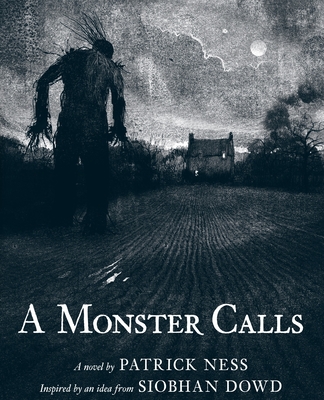 On the younger teen readers’ front, I’m savoring Patrick Ness’s illustrated novel, A Monster Calls, in which a boy, Conor, is called from bed by a nightmare. It’s not the terrifying nightmare he contends with every sleep; but something much more ancient, treelike, a living monster of a nightmare, and it wants something from Conor. Ness (The Knife of Never Letting Go; The Ask and the Answer; Monsters of Men) is a consummate suspense-builder, and Jim Kay’s inky, ominous illustrations bedarken (what? isn’t that an acceptable opposite of illuminate?) the book throughout. I have to say, I LOVE seeing an illustrated novel for ages 12+.
On the younger teen readers’ front, I’m savoring Patrick Ness’s illustrated novel, A Monster Calls, in which a boy, Conor, is called from bed by a nightmare. It’s not the terrifying nightmare he contends with every sleep; but something much more ancient, treelike, a living monster of a nightmare, and it wants something from Conor. Ness (The Knife of Never Letting Go; The Ask and the Answer; Monsters of Men) is a consummate suspense-builder, and Jim Kay’s inky, ominous illustrations bedarken (what? isn’t that an acceptable opposite of illuminate?) the book throughout. I have to say, I LOVE seeing an illustrated novel for ages 12+.
This book has an unusual provenance: it was born from an idea by a supremely talented novelist, Siobhan Dowd (Bog Child, The London Eye Mystery, A Swift Pure Cry, etc.) who, I’m so sorry to have to say, passed away before she was able to complete it. Patrick Ness was approached to take on the story, and his Author’s Note at the beginning of the book explains that, while the book became something very different once another author took it on, Siobhan’s ideas begat other ideas that ricocheted off one another and grew into A Monster Calls. Knowing that the author was battling cancer can’t help but add another layer to the metaphor of a boy confronting his mother’s illness and nightmares. (This reminds me of another project that was completed after the author passed away, and whose story also can be seen as a metaphor for the author’s own struggle: Linda Smith’s brilliant, undersung picture book Mrs. Biddlebox, illustrated by the glorious Marla Frazee. Love that picture book! Love love love.)
So after relishing these two tasty morsels—no, meals!—what shall I read next? (Again, I’m especially interested in books from July to December of this year, just to keep us cutting-edge and all….)
Protecting the Merchandise
Josie Leavitt - August 22, 2011
There has been a discussion this past weekend on various bookselling listservs about ways to protect merchandise in our stores, not from theft, but from curious children and families. Every store has its own policy regarding how kids can play with toys, books or puppets in the store before they purchase them. Most small stores don’t have demos of things to play with, or a budget line item for damages, so we have to get creative.
I notice that summertime seems to be the time when I face this issue more. I attribute this to visitors who might be used to a Borders or Barnes and Noble where it’s seemingly okay to scatter merchandise throughout the store. It’s always a struggle for me to redirect a charming tot from happily destroying a toy that they’ve fallen in love with. Most parents are very good about policing their children without any input from me. Although several years ago I heard the unmistakable sound of a book jacket being ripped in half, and when I went to investigate, I saw the parent shoving the ripped jacket under the bookcase as if nothing at all had happened. They left without buying anything. This is not the norm by any means.
Usually, I have sheepish parents buying board books their toddlers have gnawed on. Often a parent will buy a toy because their child broke it. But how can a bookseller preempt the destruction without sounding harsh or preachy? There are some tricks I’ve learned over the years to make the store more user friendly.
The most obvious thing to do is keep things out of children’s reach that might break or get dirty. We actually have three stuffed dragons that someone donated to the store. These are out all the time on the floor of the picture book section. Kids can play with these for hours and no one will ask them not to. Keep some games and toys out that they can play with. If kids feel like the store is a minefield and they’ll get yelled for touching things, they won’t want to come back.
Things we’re worried about breaking live near the front counter. This way we can keep an eye on things. It’s also helpful to help explain how some toys work. Gentle guidance about how a wind-up toy works can go a long way toward everyone having a good experience.
I find what gives me fits are the toys, pens, and doo-dads that make noise. There is something about a pen with a cow’s head that moos and lights up when you push its head that’s adorable, but team that with oinking pig pen, the baaing sheep all going off together that make me a little crazy. When I’ve had enough of the farmyard symphony I try to find creative ways to get things quiet again. I usually say something like, “Two more oinks then you need to put the pig down to save the battery for another child.” Every once in a while I can just raise an eyebrow to a kid I know and they’ll put the noisy toy down with a sweet smile.
Most children are really quite good about listening and often they are very amenable to the old distract and delay tactic. Distract them with something they can actually play with and/or delay their desire to play with a certain toy until they leave the store with it.
And lastly, the best piece of advice I can offer: don’t buy toys so noisy that you can’t hear yourself think.
Subject Line Secrets:Tips on Getting Your Emails Opened
Josie Leavitt - August 19, 2011
As I sat in the back office, trying to catch up with recent email, I noticed a pattern: I tended to hit the Delete key (message unread) when a subject header from a publishing house read simply, “August Newsletter,” or “News from Frazzmatazz Publishing.” But headers with a hook — some specific book or author or event or even a broad theme (“Frazzmatazz’s Back-to-School Blitz”) — got my attention.
I think we’re all so overloaded by email that it’s no longer enough to count on our business’s reputations to catch a reader’s interest. If you send out an email with the same subject header every month, ‘News from,” we stop attending to it. Some days I get between 50 and 100 emails. That’s a lot of competition for my attention. A guaranteed way for me to bypass an email is when the subject says, “Do not Delete”, especially when that pops up monthly. The subject line is important. It’s a lot like the set-up to a joke. It should give me a good sense of what the email is about and tell me enough that I want to know more. Specificity and urgency are what’s missing from most subject lines.
What is your news? Just because it’s August doesn’t mean I necessarily care about your publishing house news. But if you’ve got an amazing new book out by an author I’m likely to sell, that’s news. “New book by so-so is available now,” will catch my eye. Of course if I’m not familiar with the author, I might skip the email at first and then get back to it, but if I know the author, I will open and read the email.
Is a backlist deal about to expire? That’s news that will get me to open the email. Tell me something I care about it. “Five books now available for next day shipping,” while it’s not the most exciting topic in the world, does tell me something important. And if this is from a publisher I work with, this might be important to me.
So, don’t take the easy way out. Take an extra moment or two and think about your subject line is going to look in an inbox. It has to say something real; just being a newsletter is not enough. Is there a coupon with the newsletter, an extra discount, free shipping? Tell me more and I’ll open it.
A Real Good Deal
Josie Leavitt - August 18, 2011
Yesterday, I met with Katie McGarry, my new Workman rep, and while I was thrilled to work with Katie again, I was even more thrilled at the promotion being offered to bookstores, called Square Deal. It’s a very simple idea that starts when Workman sends the bookstore a display with two shelves that’s only 15 inches wide.
Once a month a selection of backlist books arrive, either for kids or adults. The terms of the deal are extraordinary: 50% discount, free freight, $20 a month in co-op and 120-day terms. It’s like a backlist special that most publishers offer, except the minimum is tiny and the terms are longer. The big difference is, I don’t get to choose the books. And the beauty of this deal is, if the books don’t sell, I can return them well before the bill is due. Essentially, Workman is renting a 15-inch display space in my store with books they are confident will sell. This could be an idea that might catch on.
I signed up for this deal for two reasons. The first is, I think it’s a good deal. And the second is I’m very curious to see how this will work. What I like about this is Workman is so confident with the selection of books, they are certain this deal will work and bookstores will sell books. It’s an interesting collaboration and it speaks to the changes in the publishing industry.
We’re all struggling to sell books. Publishers strive to place their books in stores in a way they think they’ll sell. Most backlist deals just come with books and decent terms. They don’t come with displays that seek to be unobtrusive. Usually, the displays are reserved for frontlist, save for the mixed holiday ones or summer reading. The difference here is the display is small and designed to fit in without giving up too much floor space. There’s nothing more irritating than a display that’s so big it obstructs shelves of books behind it. But I can imagine the frustration publishers must feel when they knew they would sell more books if they were just displayed better. And let’s face it, backlist is what keeps us all in business, and this is a great way to try to sell some.
This kind of deal is being seen throughout the industry. Publishers, usually the smaller ones, are working to create promotions that will drive traffic into stores. Unbridled Books just offered 25 ebooks for 25 cents. Several publishers, including Algonquin, are now starting to offer bundled hardcovers and e-books. Hillary Jordan’s new book, When She Woke, when purchased will come with a code that can be used to get a free e-book of the book. This helps to drive business back to the store. Any good promotion will have quality books at its focus. If the books aren’t good, then it won’t matter how nice the display or bundle is.
I’ll revisit this post in three moths and report back on how it’s done. I’m curious how other booksellers feel about the promos that are cropping for the fall.
An Invitation
Josie Leavitt - August 16, 2011
A rainy Monday was brightened considerably when a young blond tot named Finn came into the store by himself. Rest assured his grandma was waiting just outside the door for him. What had caused young Finn to venture to the register alone? Quite simply, he wanted to hand JP an invitation to his third birthday.
JP is our storyteller and Finn has been coming to her weekly reads for months now, and the two of them have created a very lovely bond. When Finn approached the register my co-worker and I both asked if he needed any help – after all, it’s not every day an almost-three-year-old comes in unaccompanied. He said in a bright voice, “I want to invite JP to my birthday party.” I just about died of cuteness. It was a little heartbreaking to have to tell him JP wasn’t working.
I told him I would put the invitation in JP’s mailbox. Finn asked to see the mailbox to make sure I had put the invitation where it belonged. Then his eyes roamed around the books that make up the back room and he was silent. I’ll admit, it can be a lot to take in.
This encounter brought home the power of story hour. Reading to children creates a bond that is irreplaceable. While Finn might know me enough to say hello, I did not get a hand-colored birthday invitation. JP’s story hours are fun, personal and she knows each child well enough to pick out books she thinks they’ll really love. Finn just loves JP and he wants her to be part of his life, all because they’ve shared stories together.
Maybe we’ll add another day of story hours, and I can read. There’s nothing like a three-year-old’s birthday party to keep a bookseller young.
Better Book Titles: Rename Your Favorite Classics
Elizabeth Bluemle - August 15, 2011
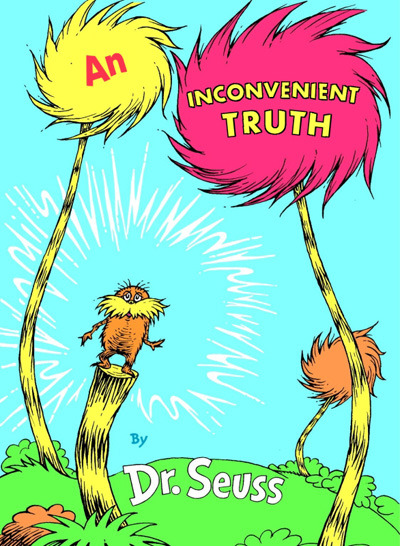 You know how sometimes, you’ll have a funny thought about a book, summarizing its literary or popular appeal or its overarching message in a single witty phrase? No? Well, Dan Wilbur, a stand-up comic and writer, is brilliant at this. His blog, Better Book Titles, is, as he describes it, “for people who do not have thousands of hours to read book reviews or blurbs or first sentences. I will cut through all the cryptic crap, and give you the meat of the story in one condensed image. Now you can read the greatest literary works of all time in mere seconds!” I’ve been meaning to share this great blog with you all, because at its funniest, it is laugh-out-loud, wickedly clever.
You know how sometimes, you’ll have a funny thought about a book, summarizing its literary or popular appeal or its overarching message in a single witty phrase? No? Well, Dan Wilbur, a stand-up comic and writer, is brilliant at this. His blog, Better Book Titles, is, as he describes it, “for people who do not have thousands of hours to read book reviews or blurbs or first sentences. I will cut through all the cryptic crap, and give you the meat of the story in one condensed image. Now you can read the greatest literary works of all time in mere seconds!” I’ve been meaning to share this great blog with you all, because at its funniest, it is laugh-out-loud, wickedly clever.
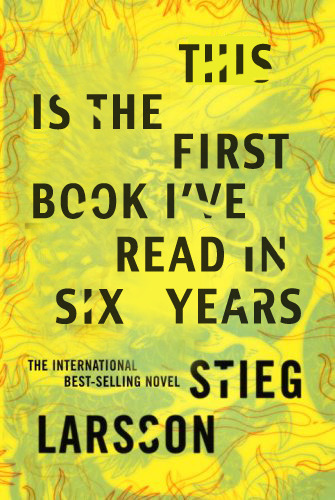 What Wilbur does is Photoshop real book jackets, replacing each title with a sly, humorously revised title that does one of several amusing things: 1) reduces the entire plot to a single, often withering, phrase (Lolita becomes Likable Rapists); 2) comments on a book’s role in popular culture (The Girl with the Dragon Tattoo is retitled This Is the First Book I’ve Read in Six Years); 3) highlights one memorable, but perhaps not primary, aspect of the story (To Kill a Mockingbird is retitled My Dad Is Cooler Than Your Dad), 4) makes a political statement (A Handmaid’s Tale becomes Sarah Palin’s America) or 5) creates a mash-up of books and movies or books and books (Blankets becomes She’s Just Not That Into You).
What Wilbur does is Photoshop real book jackets, replacing each title with a sly, humorously revised title that does one of several amusing things: 1) reduces the entire plot to a single, often withering, phrase (Lolita becomes Likable Rapists); 2) comments on a book’s role in popular culture (The Girl with the Dragon Tattoo is retitled This Is the First Book I’ve Read in Six Years); 3) highlights one memorable, but perhaps not primary, aspect of the story (To Kill a Mockingbird is retitled My Dad Is Cooler Than Your Dad), 4) makes a political statement (A Handmaid’s Tale becomes Sarah Palin’s America) or 5) creates a mash-up of books and movies or books and books (Blankets becomes She’s Just Not That Into You).
Wilbur’s Photoshopping skills are as sharp as his sense of humor. Scroll the archives; there are many children’s books lampooned within. Babar becomes French Colonialism for Kids. Oh, the Places You’ll Go! becomes Last Minute Graduation Gift. The Giving Tree becomes Call Your Mom. How can we resist this blog?!
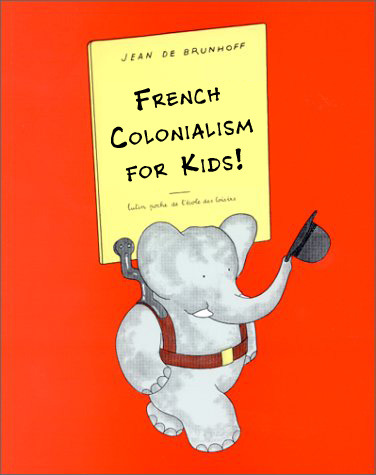

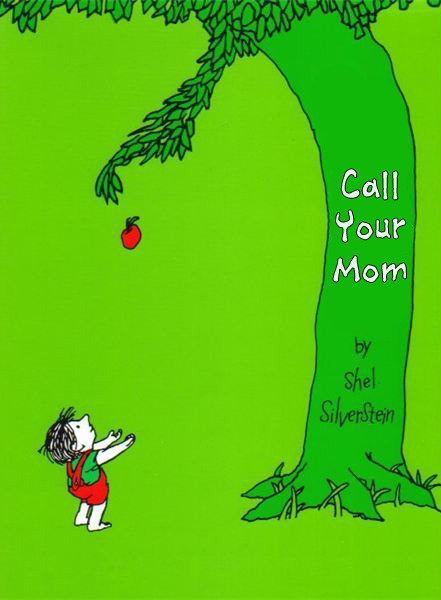
A few more funnies from the Archive (which is well worth spending time in):
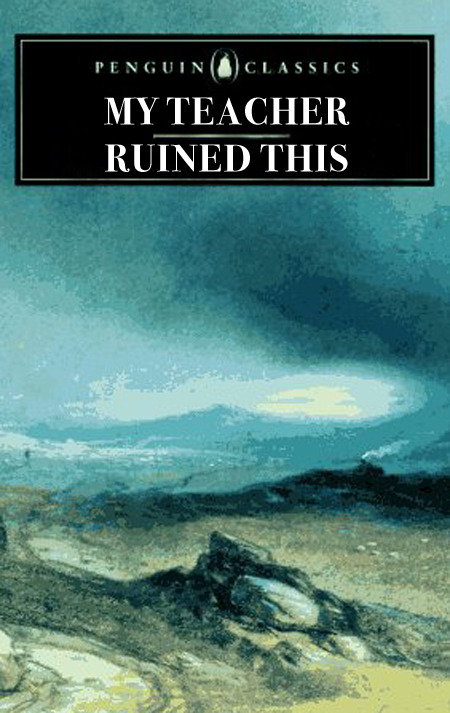


One of the best things about the blog is that readers are invited to submit their own clever ideas. You, dear readers, are the perfect audience for this! So head over to BBT, browse around, and then send your devastating submissions to dwilbs [at] gmail [dot] com. (Heck, when you’re done with that, head on over to the latest New Yorker caption contest.)
Have a creative Monday!

